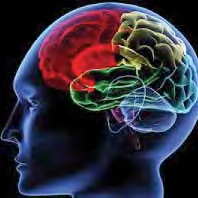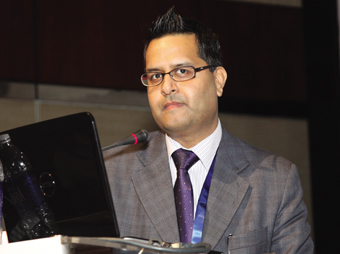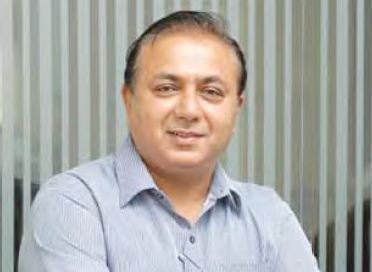

mHEALTH represents the acme of innovation in cellular services, it enables anytime, anywhere healthcare
By Shally Makin, Elets News Network (ENN)

Still in its embryonic stage,mHEALTH market brings aboutintegration of computer, networkingsoftware and hardware technologies,such as mobile phones, personaldigital assistants, tablets, patientmonitoring devices, for providing healthservices to patients. The speed ofadoption will vary in different countriesdetermined by how open the variousstakeholders are to use of mobile basedservices.
A PwC report states that mobile healthservices will become a billion dollar opportunityfor India, Asia Pacific and globalmarkets by 2017. The report says themarket will provide a revenue opportunityworth ` 3,000 crore or USD 0.6 billionfor India and USD 23 billion for theworld by 2017.
mHEALTH services are growing fastdue to two basic factors – firstly the mobilesubscriptions are ubiquitous in theemerging market and secondly consumers in developed market access such services forsake of convenience, cost advantage and quality.
Approximately 70 percent healthcareapps are consumer focused, while theremaining 30 percent are designedfor medical professionals. These appsare typically more sophisticated, andcan offer clinicians access to patientinformation and the ability to conductfurther analysis, such as creating 3Danatomical models
Despite demand and the obvious potential benefits of mHEALTH, rapid adoption is notyet occurring. The main barrier is not the technology; rather it is the inherent resistance tochange. In order to support the successful roll out and adoption of new health services, governments,regulators and healthcare providers need to work with mobile operators, devicevendors and content and application players.
 Matt Theis, Matt Theis,Founder, Dimagi SoftwareCreating Mobility forthe End User The number of non-mobile subscribers across the globe is falling rapidly.As mobile subscriptions in India alone approach the one billion mark, thepenetration, utility, and potential for what a mobile phone can do has createdinnumerable opportunities. There is a huge rise in the number of organisationsthat are working to enhance the scope of your mobile. As the number ofmobile applications grows, the challenge for us is to figure out which applicationsmake a difference. We need the potential of every application and decide whichof them can be scaled up. |
 Annie Mathew, Annie Mathew,Head ofAlliances, RIM IndiaEngineering mHEALTH To be effective, mHEALTH has to work across geographic, time, social and cultural barriers MphRx connect, an applicationavailable on Blackberrysmart phones, offers cloudbasedand mobile-based solutions forstoring, retrieving and sharing patienthealth records among hospitals, physiciansand patients across geographieson mobile devices at all Black-Berry platforms and web interfaces.There are various formats of healthreports, which can be accessed onmobile phones. From radiology imagesand reports to lab results, the applicationprovides solutions to supporta hub-and-spoke model for detectingand monitoring retinopathy conditionsfor diabetes patients. |

Bala Mahadevan,
CEO India,Orange Business Services
Standardise Operable Methodsto Connect
This industry lacks stable business models that can help reduce the economic and health divide
As per a recent industry study, Indiasrural population is well-suitedfor mHEALTH programmesdue to the high penetration of low-costmobile telephony and given the dearthof qualified medical personnel. Technologystill presents a challenge formHEALTH adopters, as we still donthave that high level of penetration ofmobile and broadband in rural areas.
Orange offers health line in partnershipwith Bhutanese Ministry of Health; it facilitatesreal time healthcare services, realtimehealth advice and 24X7 emergencyresponses for the people of Bhutan. TELUS Health Solutions and Orange joinedforces to develop innovative remote monitoringsolutions for patients with chronicdiseases. A remotely monitored cardiacimplant service launched in US and Europeenables patients to wirelessly uploaddata about their heart condition to adoctor using 3G, 2G or landline.
Other services features long-life SIMcards that can cope with extreme conditionsand be used virtually anywhere inthe world. Orange is also participatingin the fight against counterfeit drugs inKenya and Cameroon by providing anSMS-based system, where up to 25 percentof drugs are potentially affected.
Apps for m-health
The Embedded Area Network (EAN) is aconcept where a cellular module, suchas a SIM card, is embedded in the medicalsensor to communicate to the remoteservice via wireless networks. This newmarket opportunity has seen new devicesin the mHEALTH category appearrecently, the desire is to standardise themethod of connecting through mobilenetworks and enable an interoperable
back end with a plug and play front end.
The project partners share the beliefthat the ability to seamlessly embed cellularservices with medical devices willguarantee compatibility and interoperability,and will be a key contributor tothe success of mHEALTH. The ultimateobjective is to provide an out of the boxexperience to consumers, so that theycan access all kinds of medical servicesthrough their devices.

Abhay Barhanpurkar,
Solution Architect,Symphony TelecaCorporation
Mobile Care
In the next few years, innovations in mobile and connecteddevice technology will fundamentally transform the healthcarelandscape, providing new solutions to address chronicdisease conditions and revolutionise the way treatments areadministered. The monitoring devices are becoming smaller,portable and mobile. Technology such as Micro Electro MechanicalSystems (MEMS) is helping in developing miniaturisedbiological sensing devices. Using such technologies in wearabledevices such as insulin pumps in tele-health applicationsis helping us to stay away from the hospitals thereby reducingthe cost and improving the quality of life of diabetic patients.Other examples include implantable diagnostics including patientvitals monitor, smart pills and wearable diagnostics.
Use of wearable Personal Emergency Response Systems(PERS) systems is becoming feasible for them to age and livein place and independently. Care providers can now monitorthe health and activities of their elderly people using wearableactivity monitors and fall detection technologies such as theone developed by Wellcore and MobiWatch.
As the cost of quality care is increasing, diagnostic tests arebecoming affordable, but not the cure. Therefore people wantto stay fit and are focusing on personal wellness programmesusing devices like FitBit and Nintendo Wii. Gym equipmentsuch as a bicycle or treadmill can talk with your mobile phoneusing ANT+ wireless protocol and one can track his activityand compare against goals.
One of the challenges oftodays technologies is affordability.Secondly, recodingof your vital parametersis considered a time consumingactivity. One has tomeasure his weight, bloodpressure, heart rate, pulserate, temperature separatelyand record it somewhere.Innovators are trying to usemobile handsets to performvital functions like monitoring of temperature, heart rate,pulse rate, BP monitoring instead of having a new device. Asolution to automate the capture of data such as a wearablevitals patch is needed. Standards such as IEEE 11073 standardis making it possible to provide seamless connectivity ofdifferent systems and provide better and accurate health solutions.
Overall the challenge is behavioural and we need a solutionwhich can motivate the user to take required actions. This ispossible though mobile based friendly medication reminders,incentive programmes, prizes, medical games and continuouseducation.

Rajesh Razdan,
Co-Founderand Director, mCarbon TechInnovation
Engineering mHEALTH
We live in a world thatsconnected wirelesslywith almost as manymobile subscribers as there arepeople on the planet. Mobility byits very nature implies that usersare always part of a network, whichradically increases the variety, velocity,volume and value of informationthey send and receive.
mHealth involves the use and capitalisationon a mobile phones core utility of voiceand short messaging service (SMS) as wellas more complex functionalities and applicationsincluding GPRS, 3G and 4G systems,GPS, and bluetooth. Moreover changes inthe ICT environment are also affecting mhealthVAS initiatives, such as the shift fromSMS to interactive voice response (IVR).
Just as SMS-based services have oftenbeen linked to voice communications byhotlines and toll-free numbers, IVR offersa more comprehensive toolkit for reachingout to illiterate people. The ubiquity of MVASsolutions offers tremendous opportunitiesfor the healthcare industry to addressone of the most pressing global challenges:making healthcare more accessible, faster,better and cheaper. The use of mobileand wireless technologies to support theachievement of health objectives (mHealth)has the potential to transform the face ofhealth service delivery across the globe.
A powerful combination of factors isdriving this change. These include rapidadvances in mobile technologies and applications,a rise in new opportunities forthe integration of mobile health into existingeHealth services, and the continued growthin coverage of mobile cellular networks.mHealth applications can be used for supplychain management, reducing delays inmedicine shipments and providing point-ofusetechnologies for consumers to verify theauthenticity of products they buy.
Value Added Products and Services[VAS] for opcos and enterprises has recentlydeveloped a product for pregnantwomen to count their babys movement; itis an easy, non-invasive test that one can doat home through a simple service subscriptionto check their babys well-being. BabyKicks is much more than just knowing thatthe baby moves!
Be a part of Elets Collaborative Initiatives. Join Us for Upcoming Events and explore business opportunities. Like us on Facebook , connect with us on LinkedIn and follow us on Twitter , Instagram.


 Prof K Ganapathy,
Prof K Ganapathy,









